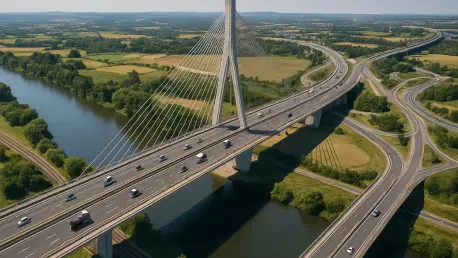I’m thrilled to sit down with Luca Calaraili, a seasoned expert in construction with a deep background in design and architecture. Luca’s passion for integrating technology into the industry has positioned him as a thought leader in infrastructure development. Today, we’ll dive into the resilience of infrastructure investments, the impact of public-private partnerships, and the innovative trends shaping the future of projects like highways and airports.
What draws companies to invest in infrastructure like roads and airports for the long haul?
Infrastructure such as roads and airports is fundamental to keeping economies and cities functioning smoothly. These assets are built to last, often spanning decades, which makes them incredibly appealing to investors with a long-term perspective. They provide consistent returns, even during economic downturns, because they’re tied to essential needs—people and goods always need to move. Plus, many of these projects come with inflation-adjusted revenue streams, like tolls or airport fees, which add a layer of financial stability.
How do these infrastructure projects contribute to the vitality of growing urban areas?
As cities expand and populations grow, the demand for efficient mobility skyrockets. Highways and airports directly address this by reducing travel times and improving connectivity. For instance, a well-designed highway system can cut congestion, while a modern airport can handle more passengers and cargo, boosting local businesses. These projects don’t just solve logistical problems; they drive economic growth by making cities more accessible and attractive for investment.
Can you share some insights on why public-private partnerships are becoming a go-to solution for infrastructure development?
With city and state budgets often stretched thin, traditional public funding can’t always keep up with the demand for new infrastructure. Public-private partnerships, or P3s, step in to bridge that gap by bringing private capital and expertise into the mix. They allow projects to move forward faster and often more efficiently, since private partners have a vested interest in meeting deadlines and controlling costs. It’s a win-win—governments get the infrastructure they need, and private entities secure stable, long-term returns.
Could you highlight a specific P3 project that has had a transformative impact on a community?
Absolutely, a great example is the managed express lanes in Dallas-Fort Worth, like the TEXpress lanes. These projects have pumped billions into the local economy—around $24 billion, to be exact—while creating over 100,000 jobs and generating significant wages. Beyond the numbers, they’ve eased traffic for commuters and improved access to key areas, which has a real, tangible effect on people’s daily lives. Projects like these show how P3s can deliver both economic and social value.
How are economic challenges, like tight budgets or rising costs, shaping the types of infrastructure projects that get prioritized?
Economic pressures often force a hard look at what’s essential versus what’s nice to have. When budgets are tight, projects that address critical needs—like reducing congestion or upgrading outdated airports—tend to take precedence. These conditions also push for more innovative financing models, like P3s, and encourage a focus on projects that can deliver quick, visible benefits to justify the investment. It’s about maximizing impact with limited resources.
What role does technology play in making infrastructure projects more efficient and appealing to stakeholders?
Technology is a game-changer. We’re seeing highways with dynamic tolling systems that adjust pricing based on traffic flow, which helps manage congestion in real time. At airports, advanced passenger flow tech streamlines check-ins and security, making travel smoother. These innovations not only improve user experience but also boost revenue potential—think airports as destinations with retail and dining, enhanced by digital tools. For stakeholders, this means projects aren’t just functional; they’re smarter and more profitable.
How do you see the future of infrastructure financing evolving to meet the growing demand in the U.S.?
There’s a massive investment gap—trillions of dollars—when it comes to U.S. infrastructure. We’re already seeing shifts, like updates to federal programs that increase loan caps for project sponsors, which opens the door to more participants. Streamlined regulations are also speeding up delivery. I think we’ll see even more creative financing solutions, with P3s playing a bigger role, alongside tools like green bonds for sustainable projects. The key will be balancing risk and reward to keep attracting private investment.
What’s your forecast for the infrastructure sector over the next decade?
I’m optimistic. The need for modern, resilient infrastructure isn’t going away—it’s only going to grow as urbanization continues and travel demand rises. I expect we’ll see more integration of technology, making projects smarter and more sustainable. Financing will keep evolving, with P3s becoming a standard approach in many regions. Ultimately, infrastructure will remain a bedrock investment, delivering both stability and growth, while adapting to the needs of a changing world.









